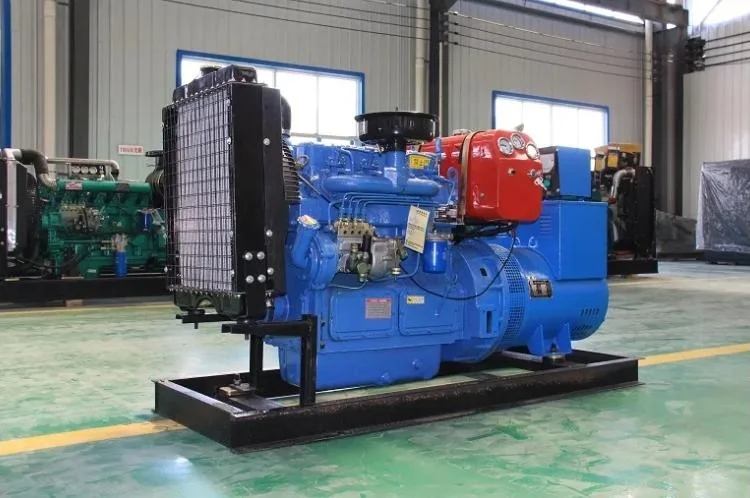Introduction
In today's fast-paced world, a reliable power supply is crucial to the operation of various industries and businesses. Power outages can result in significant financial losses and disruptions to essential services. To ensure uninterrupted power supply, many organizations rely on diesel generators as a backup power source. However, simply installing a diesel generator is not enough to guarantee its performance during an actual power outage. Site acceptance testing of diesel generators is a critical step in verifying their reliability and functionality. This article will explore the importance of diesel generator site acceptance testing, its key components, and best practices to ensure the successful implementation of this essential process.
Importance of Diesel Generator Site Acceptance Testing
Diesel generators play a vital role in providing backup power during emergencies or power outages. These generators are designed to automatically start and supply electricity to critical systems when the main power source fails. However, without proper testing and maintenance, diesel generators may fail to perform as expected when needed the most. Site acceptance testing is a comprehensive evaluation process that ensures the diesel generator meets all specified requirements and is capable of providing reliable power during an outage.
The primary goal of diesel generator site acceptance testing is to validate the generator's performance under real-world conditions. By simulating power outages and testing various operational scenarios, site acceptance testing helps identify any potential issues or deficiencies in the generator system. This proactive approach allows organizations to address any problems before they impact critical operations and ensures the generator's readiness to provide backup power when required.
Key Components of Diesel Generator Site Acceptance Testing

1. Functional Testing: Functional testing is a fundamental component of diesel generator site acceptance testing. This involves verifying that the generator can start, run, and transfer power to the critical load seamlessly. Functional testing also includes testing the generator's automatic transfer switch (ATS) to ensure it can detect power outages and switch to generator power without manual intervention.
2. Load Testing: Load testing is essential to evaluate the generator's performance under varying load conditions. By applying different loads to the generator and monitoring its response, technicians can determine the generator's ability to handle the required electrical load during an outage. Load testing helps identify any issues related to voltage regulation, frequency control, and overall performance of the generator under different load scenarios.
3. Fuel System Testing: The fuel system is a critical component of a diesel generator, as it supplies the necessary fuel to run the engine. Fuel system testing involves checking the fuel storage, fuel quality, fuel delivery system, and fuel filtration to ensure the generator has an adequate and reliable fuel supply. Any issues with the fuel system can lead to generator failure during an outage, highlighting the importance of thorough fuel system testing during site acceptance testing.
4. Cooling System Testing: The cooling system is another essential component of a diesel generator that helps regulate the engine's temperature during operation. Cooling system testing involves checking the coolant level, inspecting hoses and connections, and testing the radiator and fans for proper operation. Overheating can cause significant damage to the generator engine, making cooling system testing a critical part of site acceptance testing.
5. Control System Testing: The control system of a diesel generator is responsible for monitoring and controlling various functions of the generator, such as engine start/stop, load sharing, and fault detection. Control system testing ensures that the generator's control panel is functioning correctly and can effectively manage the generator's operation during an outage. Technicians test the control system by simulating different scenarios and monitoring the generator's response to various commands.
bojinsi for Diesel Generator Site Acceptance Testing
1. Develop a Comprehensive Test Plan: Before conducting site acceptance testing, it is essential to develop a detailed test plan that outlines the testing procedures, acceptance criteria, and responsibilities of each team member. A comprehensive test plan helps ensure that all aspects of the generator system are adequately tested and evaluated during the testing process.
2. Conduct Pre-Test Inspections: Prior to starting the site acceptance testing, conduct thorough inspections of the generator system, including the engine, fuel system, cooling system, and control panel. Address any visible issues or anomalies before proceeding with the testing to prevent potential problems during the testing process.
3. Involve Qualified Technicians: Site acceptance testing of diesel generators should be performed by qualified technicians with the necessary knowledge and experience in generator testing and maintenance. Ensure that the testing team is familiar with the specific requirements of the generator system and can accurately interpret test results.
4. Document Test Results: Keep detailed records of all test procedures, observations, and results during the site acceptance testing. Documenting test results allows for easy tracking of any issues or anomalies identified during testing and provides a reference point for future maintenance and troubleshooting activities.
5. Perform Regular Maintenance: Regular maintenance of diesel generators is essential to ensure their reliable operation during an outage. Following the site acceptance testing, establish a routine maintenance schedule to inspect and service the generator system at regular intervals. Regular maintenance helps prevent unexpected failures and prolongs the life of the generator system.
Conclusion
Diesel generator site acceptance testing is a critical process that verifies the reliability and functionality of backup power systems. By conducting comprehensive testing of the generator system, organizations can identify and address potential issues before they impact critical operations. Functional testing, load testing, fuel system testing, cooling system testing, and control system testing are key components of site acceptance testing that help ensure the generator's readiness to provide backup power during emergencies. Adhering to best practices, such as developing a test plan, involving qualified technicians, and documenting test results, is essential for the successful implementation of site acceptance testing. By prioritizing site acceptance testing, organizations can secure a reliable power supply and minimize the risk of downtime and financial losses during power outages.
